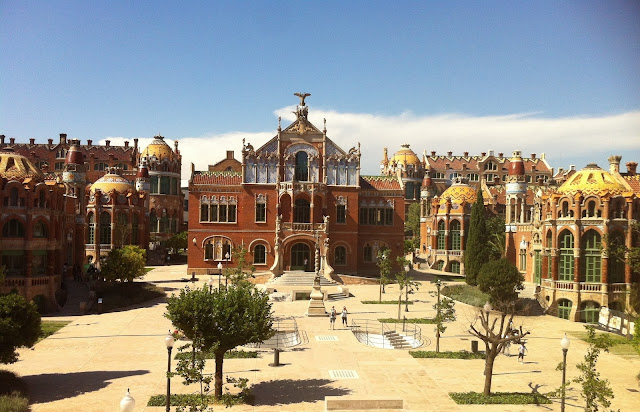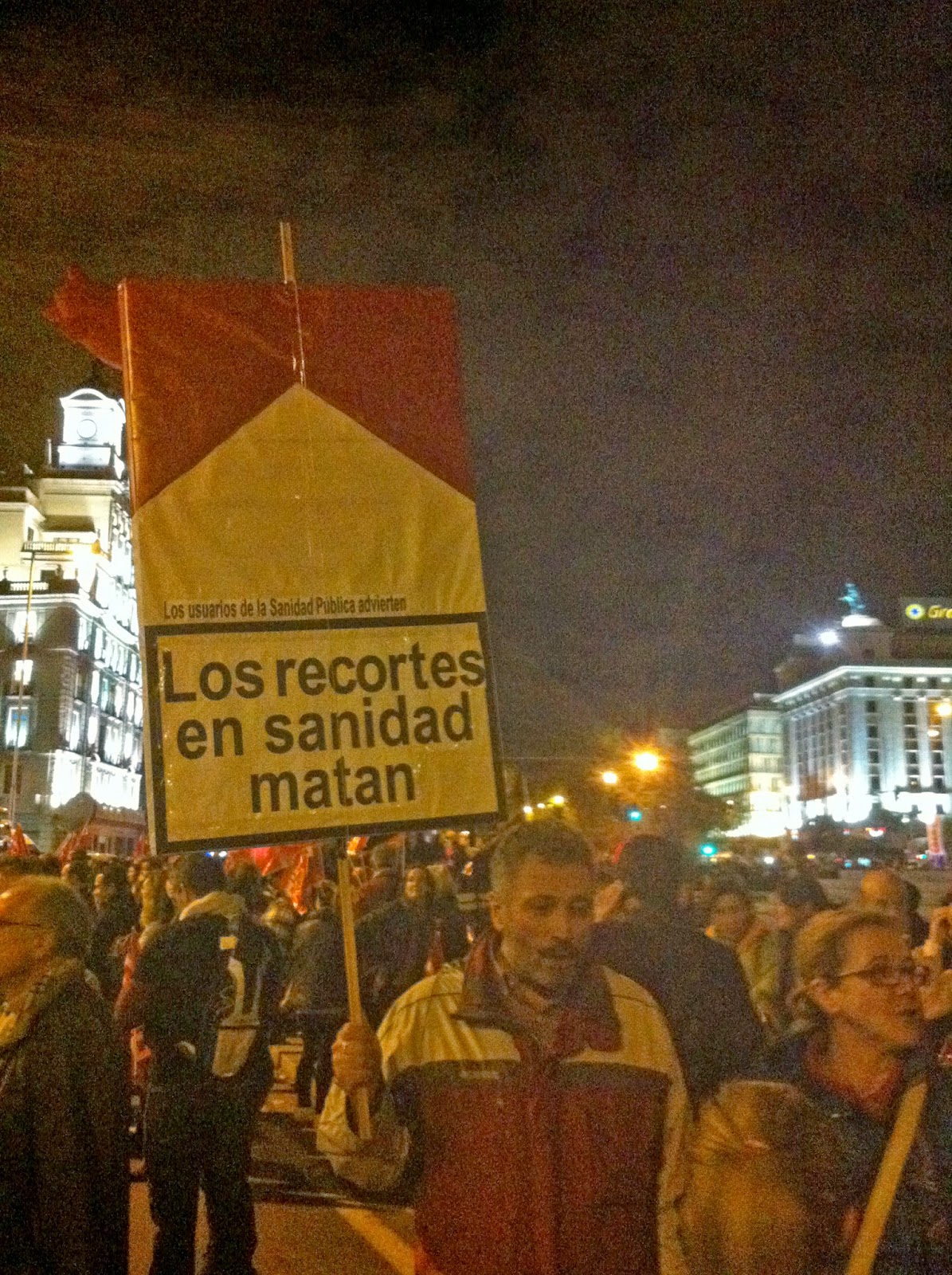This last
week or so a definite chill has crept into the morning and evening air - we’ve
clearly left the summer behind us here in Barcelona.
But at the
same time the air temperature has been dropping, the political temperature
has been going in the opposite direction.
 |
| Always proudly Catalan, the Sagrada Familia is draped with the Catalan flag (la Senyera) for La Diada |
To start
with we celebrated La Diada –
Cataluña’s “national” day – on September 11. I can’t quite believe it’s a
whole year since I last wrote about it.
For the
past five years, La Diada has shifted
from a celebration of Catalan nationalism to a show of people-power for Catalan
independence. Many Catalans who are not independistas say that it has been “hijacked” by the independence movement.
And perhaps
they’re right. This year’s slogan was Via
lliure a la Rebública Catalana (Road to the Catalan Republic). The word Lluire is quite significant here as
although it doesn’t make it into the expression’s English translation, it means
“Free”.
 |
| My local sign-up and information stall for La Diada and voting for Catalan independence |
Once again
an emblematic Barcelona street (this year Av. Meridiana) was the setting for the hundreds of thousands,
all dressed in the year’s “uniform”, to take part in the choreographed
spectacular, which I’m pretty sure is designed much more for the external
(outside Cataluña) audience than the internal.
 |
| Crowds celebrating la Diada. Rather impressive, no? Pic by Teresa Roca, Assemblea.com. Creative Commons license |
 |
| La Diada 2015. I think the arrow being run up the street symbolises moving forward to a new future. Pic by Jordi Ventura i Plans, Assemblea.cat. Creative Commons license |
 |
| Can't get much more Catalan than this: Castellers at La Diada, 2015. Pic by Assemblea.cat. Creative Commons license |
I ventured
down amongst the throngs for a little while and was struck by two things. First was
the crescendo of Catalan. Barcelona is such a tourist city that walking around
its streets is normally like a trip to the Tower of Babel. Not that day. The
young, the old, the groups of friends, the parents calling their children to
attention, the punters ordering cervezas
in the bars - it was all being performed in Catalan.
I’ve yet to
work out whether this was because I am just not used to being in such a mob of
Catalans undiluted by the usual foreigners, whether it had to do with the
“national” pride of the day lending more people to converse in their “national”
tongue (rather than Spanish), or whether the types of Catalans who would make
the effort to take part in the La Diada
are those most likely to speak Catalan all the time anyway. I suspect it’s
probably a mix of all three.
The other
thing that stood out to me was the plethora of Blue Estelada flags – little
ones on sticks clutched in children’s hands, large ones on poles slung over
shoulders (of pedestrians and scooter riders alike) or, personally something I
find quite distasteful, being worn like a cape (I loath it when I see it done with
the Australian Flag on Australia day too).
 |
| I am really NOT a fan of flags being worn like capes. To me, no matter where I see it, it smacks of a rabid nationalism |
The
interesting thing about so many Esteladas
is that it is not even the Catalan flag. It’s the flag for Catalan independence; perhaps another point for those who subscribe to the hijacked Diada thesis.
 |
| The Estalada being flown from the Arc de Triomf. I was surprised to see that as the Arc de Triomf is a city monument as the Estalada is not an official flag |
This year’s
Diada was a sort of unofficial
campaign kick-off for the other reason the political temperature is souring –
it’s election-day for the Catalan parliament today.
The
pro-independence parties have billed these elections as a plebiscite on
independence, so much so that the two main ones (polar opposites on just about every else else) have joined with
pro-independence community groups to form a unified ticket, Junts Pel Sí (roughly, “Together for It”).
And they've promised to start the process to achieve independence from Spain if they get a big enough result.
And they've promised to start the process to achieve independence from Spain if they get a big enough result.
The non-independence
parties claim that the independistas
are deliberately deceiving the electorate by calling this regional parliamentary election a plebiscite
on independence - something that is illegal under Spain’s constitution
anyway, they argue.
The last
few sondeos (opinion polls) are
calling an absolute majority for the independence parties in Cataluña’s
Parliament, but only just (although that “just” does get a little chunkier with
each poll).
But at the
same time, it looks like the voter turnout is going to be historically high and
traditionally a higher voter turnout augurs better for the non-independistas.
It's going to be a nail-biting count-night for both sides tonight.
It's going to be a nail-biting count-night for both sides tonight.
As an extranjero, not only in Spain but also
in Cataluña, (or should I say Catalunya)
I’m not sure I have a right to an opinion - I’m sure I don’t understand all the
social and historical intricacies of the arguments.
But if I were to venture an opinion, and this probably has a lot to do with my first seven years in Spain
being spent in Madrid, I don’t really like the idea of a broken-up Spain.
Having said that though, since I moved to Barcelona I haven't quite felt that I was living in the same Spain anyway.
Having said that though, since I moved to Barcelona I haven't quite felt that I was living in the same Spain anyway.
***
If you’re
interested, here are a few links in English that offer some insight into just how
complex the situation really is:
From an ex
Spanish Prime Minister to the Catalan Premier:
The Catalan
Premier’s response:
Another
Catalan politician’s (nationalist, but not independista)
response to the ex-Prime Minister’s letter:
















































